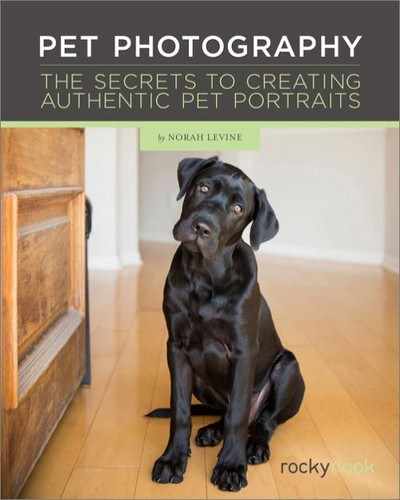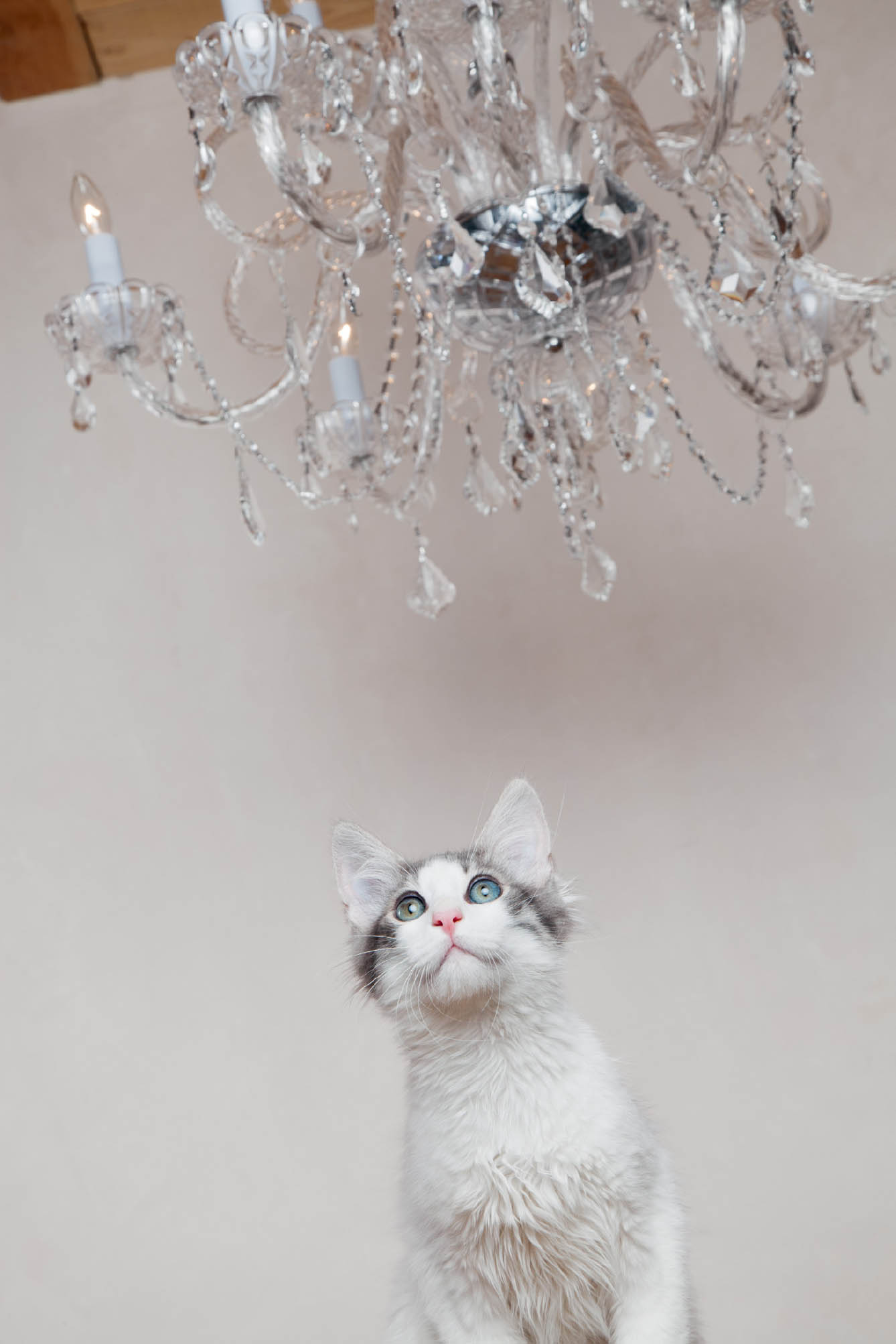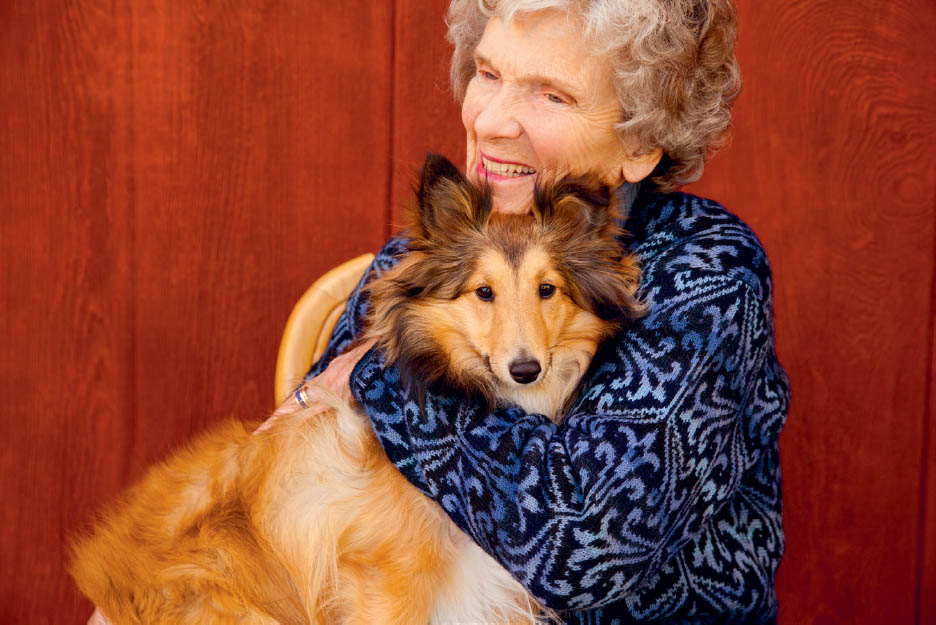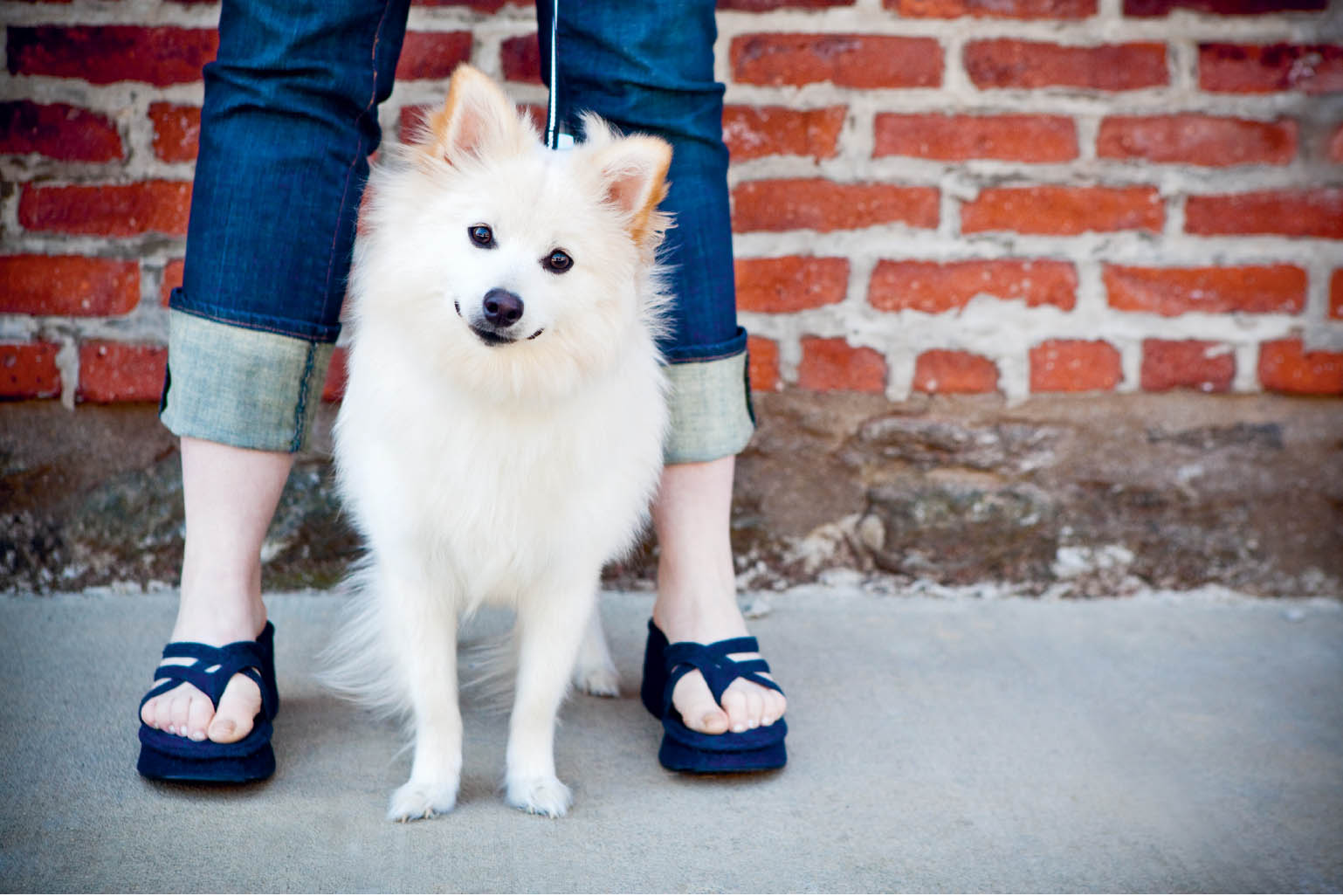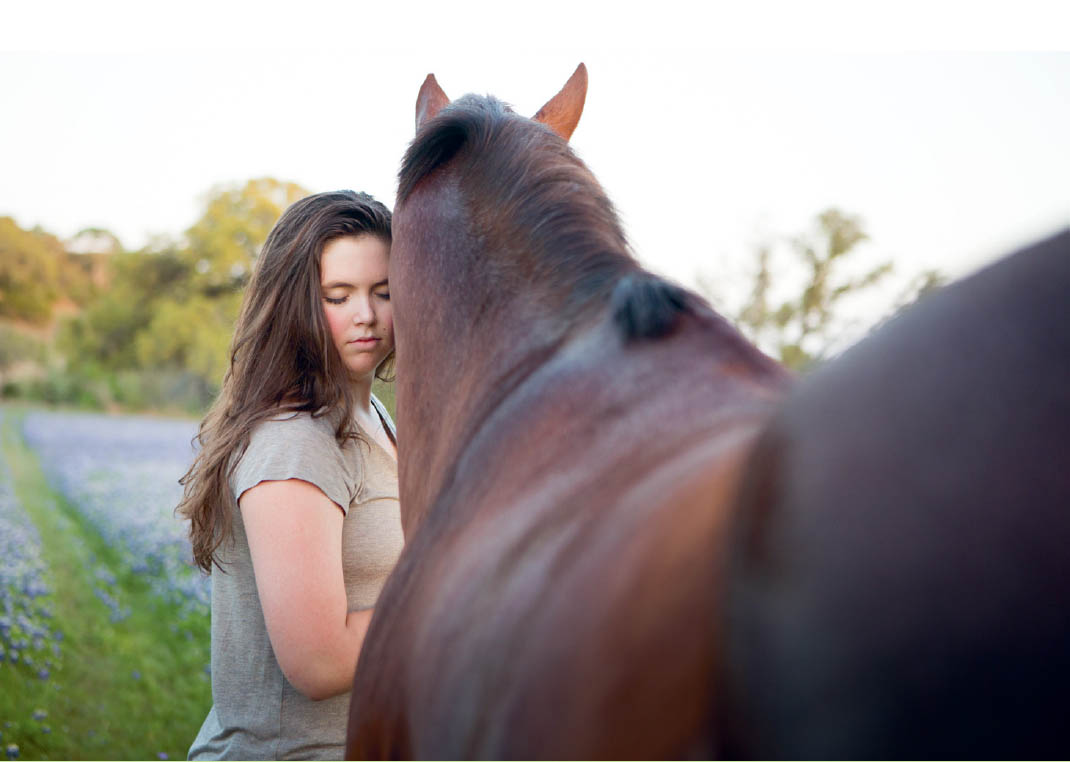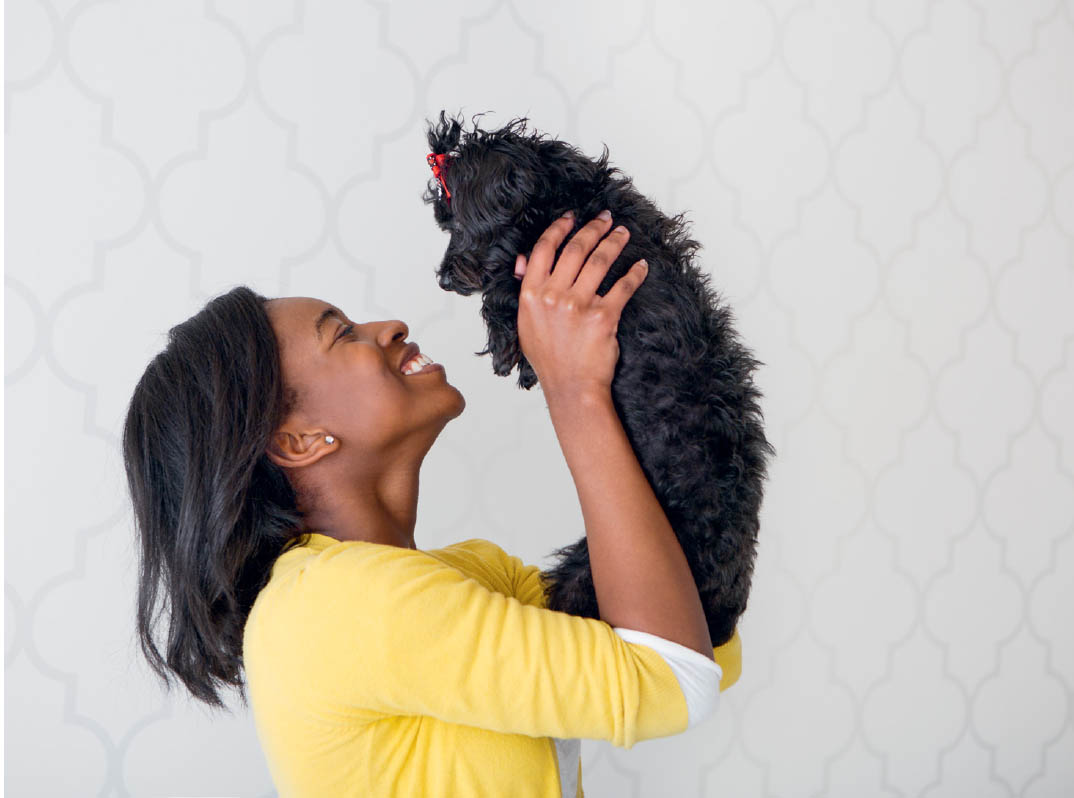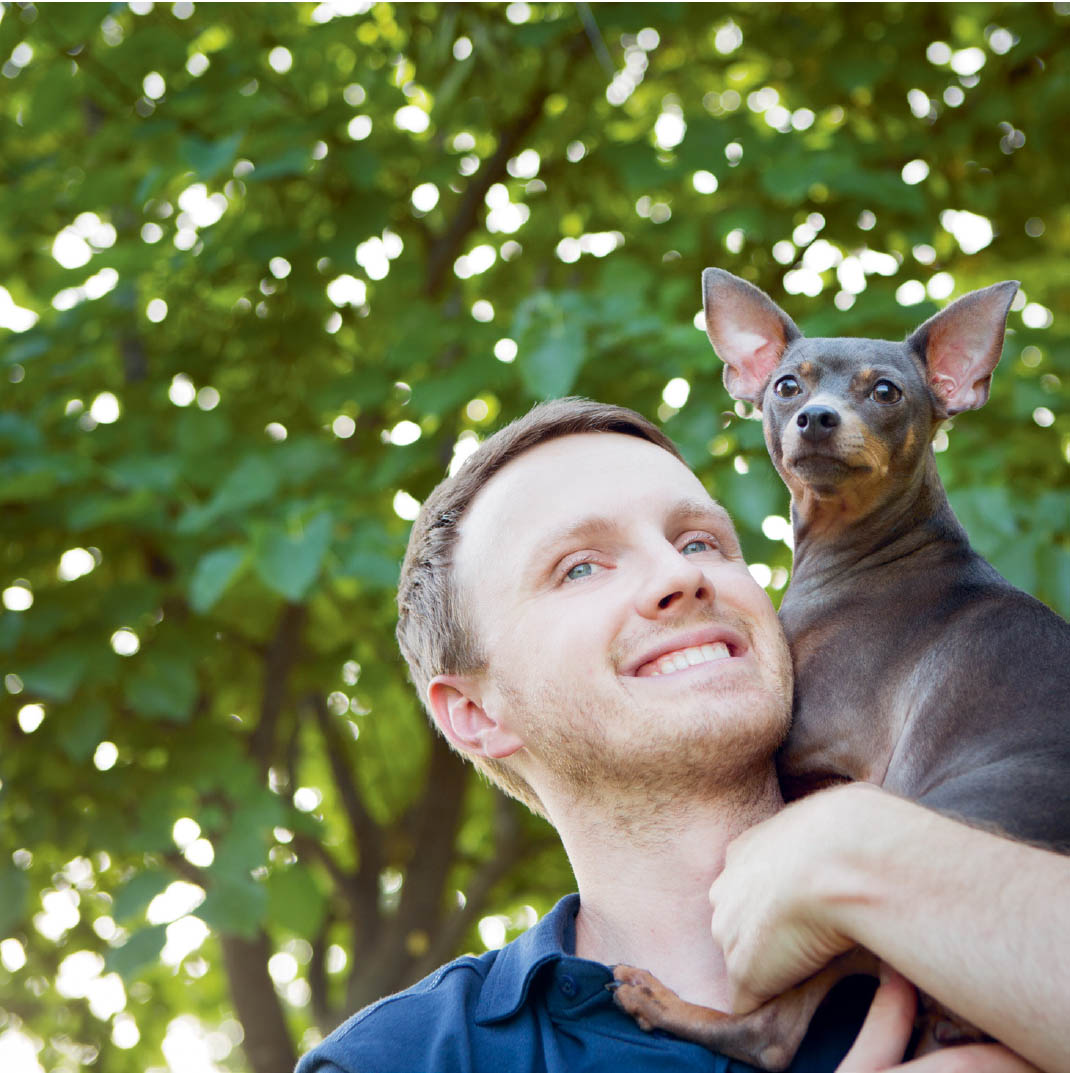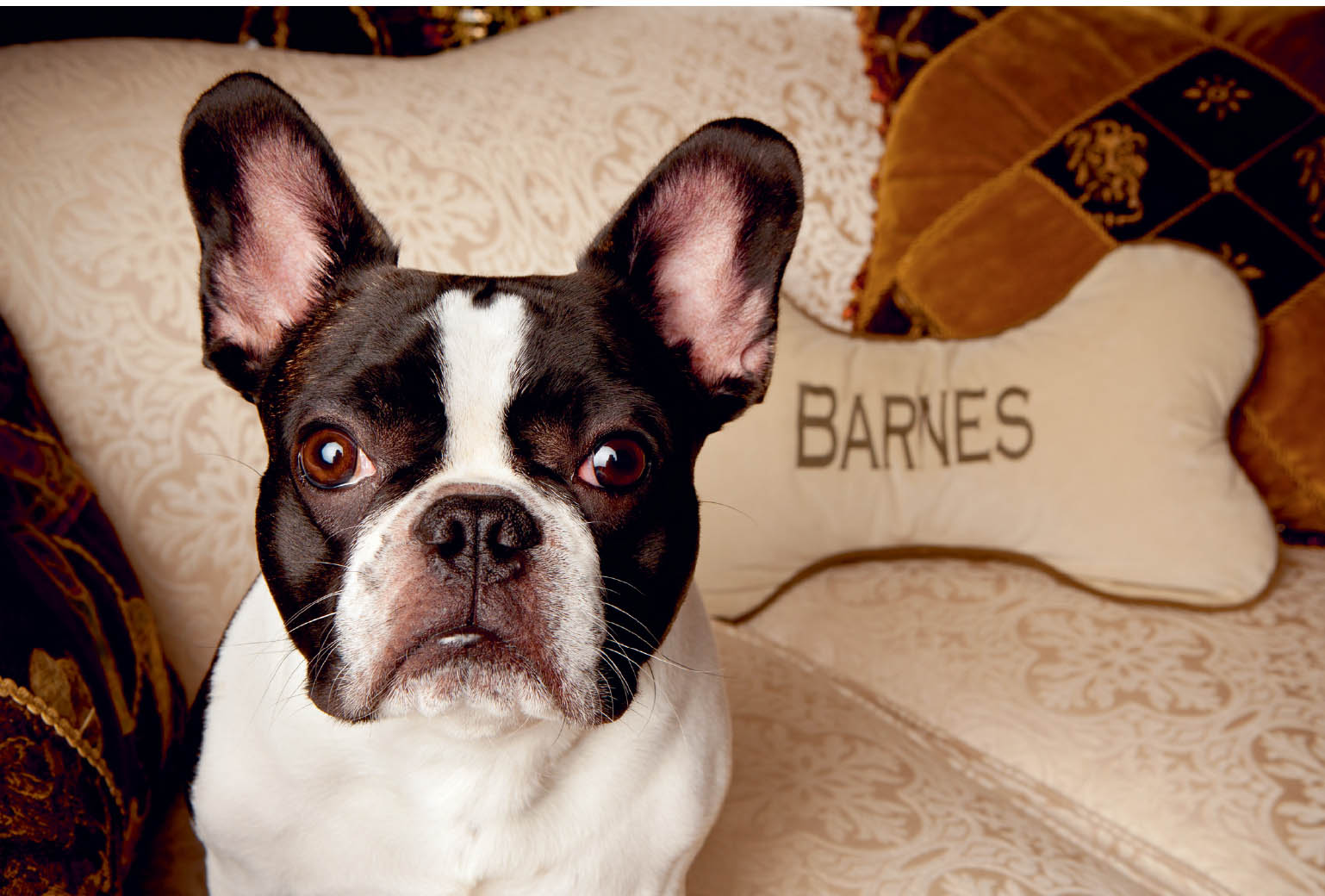CHAPTER 6: THE PHOTO SHOOT
The next step in the process of pet photography is to take a look at how to manage the overall experience of the photo shoot from beginning to end. While it is important to have specific approaches for exposure, composition, lighting, and creative choices, putting all of these elements together in a photo shoot is a whole different story. Photo shoots with pets can be a little overwhelming, as there are so many variables and elements to take into account. Not to worry, though! We’ve got this.
Preparing for the Shoot
There are many benefits to preparing for your pet photo shoot, specifically, when you are photographing other people’s pets. Making sure that you bring the appropriate equipment, understanding the expectations of the person and animals you’ll be interacting with, scouting, and gathering information on your subjects are all part of the process. Because we are talking about photographing animals (who often do their own thing regardless of our best efforts), our preparation may seem to get thrown out the window during the session. But I’ve learned that both mental and physical preparation greatly improve the final results.
GATHERING INFORMATION
When someone contacts me to photograph their pets, I ask a series of questions to try to get a sense of the pet, the pet parent, and the location of the shoot. This information is extremely valuable and absolutely helps with the ultimate success of the photo shoot and the experience overall.
GETTING TO KNOW THE PET
Some of my questions are answered in an initial phone conversation or email, and others are answered in person before the shoot. People tend to like talking about their animals, and it’s important to listen to what they have to say. You may generate ideas from what they tell you or discover something integral to the success of your shoot.
For dog and cat portraits, I may ask a combination of the following questions leading up to the photo shoot.
- What is your dog’s or cat’s name, sex, breed, age, and general size?
- What color is your dog or cat?
- What physical attribute do you love most about him or her?
- What is your dog’s or cat’s general demeanor?
- Does your dog or cat know any commands like sit, stay, or down?
- Does your dog or cat like treats, and is he or she able to have treats?
- Are there any specific words that get his or her attention?
- Do you happen to know if your dog or cat is camera- or flash-sensitive?
- Is your dog or cat comfortable with strangers? Have you ever had any issues with him or her biting strangers?
- Does your pet need to be on-leash outdoors?
- Would you like to be photographed with your pet?
- Do you have any rules about your dog or cat spending time on furniture in your home?
- What is most important for me to capture about your dog or cat in these photographs?
SCOUTING AND PLANNING
I typically photograph my pet portraits in and around the pet’s home, but occasionally, I photograph at other locations. I used to show up to a location on the day of a photo shoot, look around for ten minutes or so, and then start the shoot, but I discovered that this approach can be limiting in many ways. There is already enough to juggle during a pet portrait session that adding the pressure of assessing a location on the spot isn’t ideal. I really care about providing my clients (and myself, to be honest) amazing photographs and a positive experience. I find there to be tremendous value in scouting a location before a photo shoot, for multiple reasons.
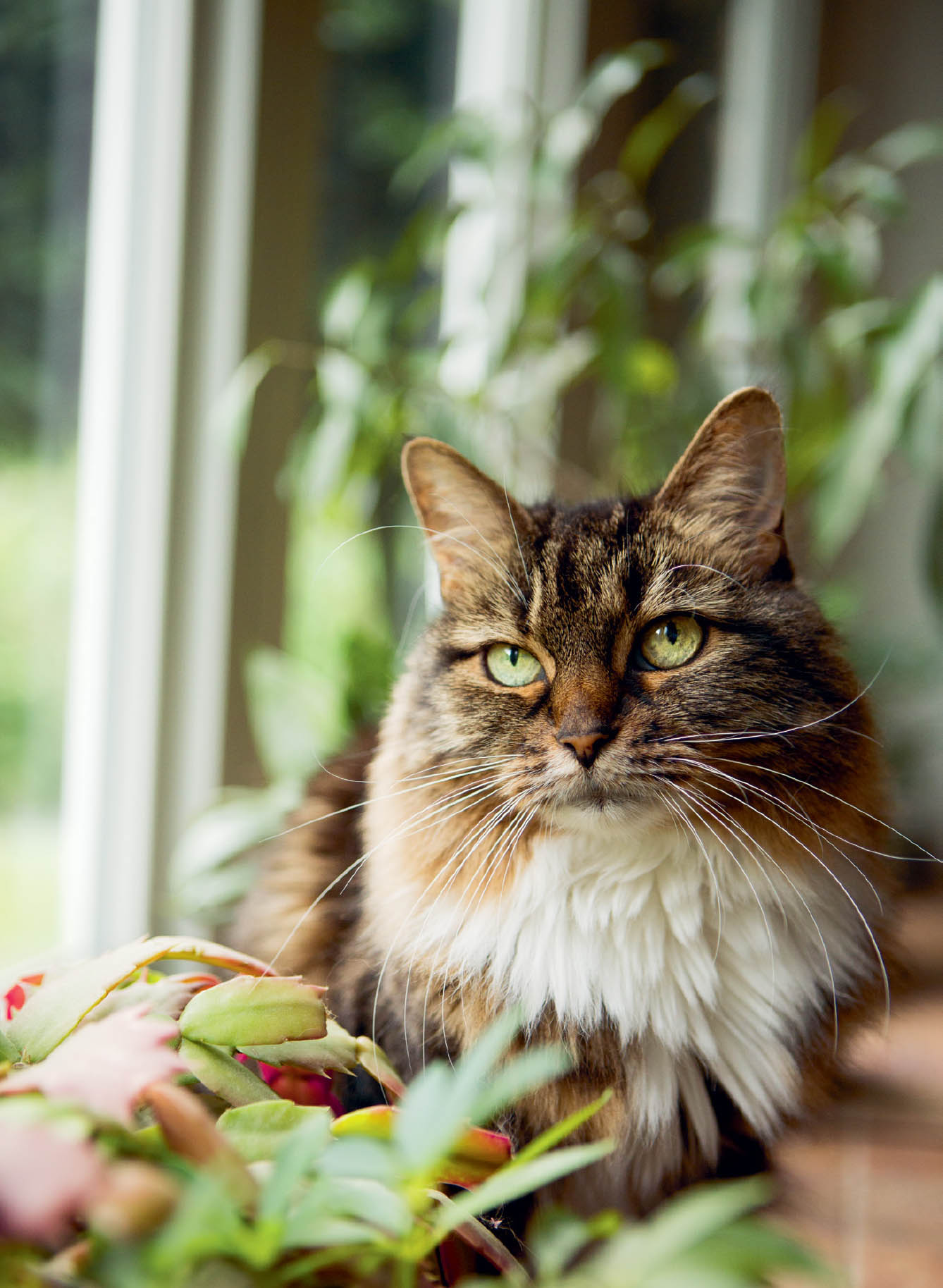
Scouting offers me the chance to build rapport and start to develop a relationship with my client. I am a “people person” and really value relationships. When my client feels comfortable with me, they will be more comfortable during the shoot, and the photographs will be stronger (if they are included in them). If they’re not being photographed, the pet parent will just be more relaxed, which helps everyone during the session. When I’ve had a chance to connect with pet parents before the shoot, I am also more comfortable and feel confident that the session is more enjoyable for everyone as a result.
Scouting also enables me to connect physically with the pet before the photo shoot day. I can start to get personal experience with their demeanor and let them check me out as well. That way, the day of the shoot isn’t the first time they’ve met me, which can help move things along more smoothly.
Physically visiting a location is the best way to get a sense of what’s happening with the light. I try to scout during the time of day that I think the photo shoot will be scheduled. If we will be photographing indoors, I try to schedule the shoot for the brightest time of day, in the most photo-friendly area or areas. If I am not able to visit the location prior to the shoot date, I will often ask the pet parent about their home in detail to get a sense of the space and may even ask them for photos of the interior and exterior of the home.
The last major reason I love to scout is to start generating ideas. I do a walk-through of the location with the client as I chat with them and start to get to know them and their pet or pets. I photograph different spaces and rooms as a kind of note-taking so that I can start to think about how I will approach the shoot on a creative level.
During the consult, I ask the following questions:
- Is there a special activity that the two of you love doing together?
- What is most important to you about these photographs?
- Is there a special place in your home (or other location) where you’d really love for me to photograph?
- What is your ultimate goal for the photographs?
I strongly recommend scouting your locations ahead of time for more ease and success on the day of your shoot. I always make notes and take snapshots with my phone to help me start to generate ideas.
BEING PREPARED THE DAY OF THE SHOOT
Once you’ve had the necessary conversations and meet-and-greet opportunities with the pet and pet parent, it will be time for the shoot. You’ll want to show up prepared and ready for success, both physically and mentally.
DRESSING APPROPRIATELY
Recognize that you are likely going to be extremely physically active during your portrait shoot, so it’s important to dress comfortably and appropriately. I highly suggest keeping your dangling jewelry to a minimum, as it can get in the way while you’re photographing and can also become a distraction for animals.
Consider wearing clothing that can move with you and allow you to get down low, climb on a stepladder, bend down, or even lie on the ground. Keep the weather in mind, and dress accordingly. I do not suggest wearing hats, as they can get in the way and sometimes intimidate animals (especially dogs and horses). I recommend wearing pants even in the summer to keep from getting scratched.
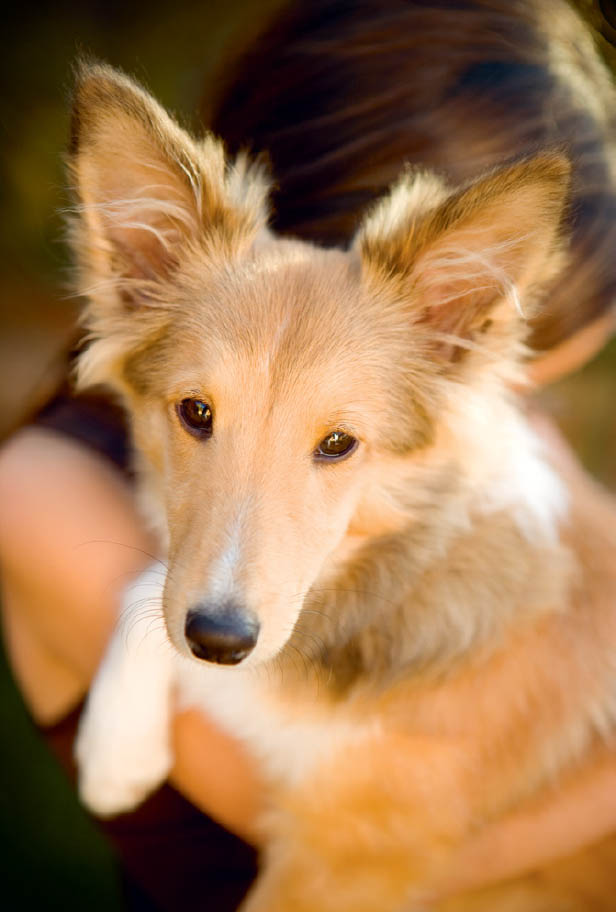
Knee pads or gardening pads are a great way to stay comfortable if you are going to be photographing on the ground or floor. Apple boxes or small crates of different heights can come in handy if you know you’ll be seated for a long time.
BRINGING YOUR GEAR
It’s a great idea to keep a running list of the items you want to bring to your pet photo shoots. If you’re using studio lighting, it can be easy to forget things, which can have a challenging impact on the shoot experience and your ultimate success.
Bring your bag of tricks as you accumulate it and anything you think might come in handy based on your prior conversations with the pet parent. For equipment, I suggest bringing anything you might use that fits in your car. Although it can be more work to load and unload if you bring more, you don’t want to be in the position of having a great idea that requires a reflector or ladder that you own but didn’t bring. You can always leave extra stuff in the car.
WORKING ALONE
I spent years working solo on my pet portraits, and you can certainly do the same. Working solo can be a bit more demanding on a physical level and can be more limiting in terms of what you can achieve during a shoot.
If you don’t have an official assistant, you may want to ask the pet parent for help in order to make the shoot go more smoothly or for a bit of lighting assistance. I try to give a heads-up to pet parents before the day of the shoot, and most are happy to help. If I know I will be working without an assistant, I will do my best to keep the lighting equipment to a minimum and limit my pet parent’s work to reflector-holding and attention-getting. I don’t have my clients set up or move lights and don’t allow them to help me carry equipment!
If you choose to ask a friend or relative to help you out, be sure to set the expectations up-front about what you want them to do so there’s no confusion on the day of the shoot.
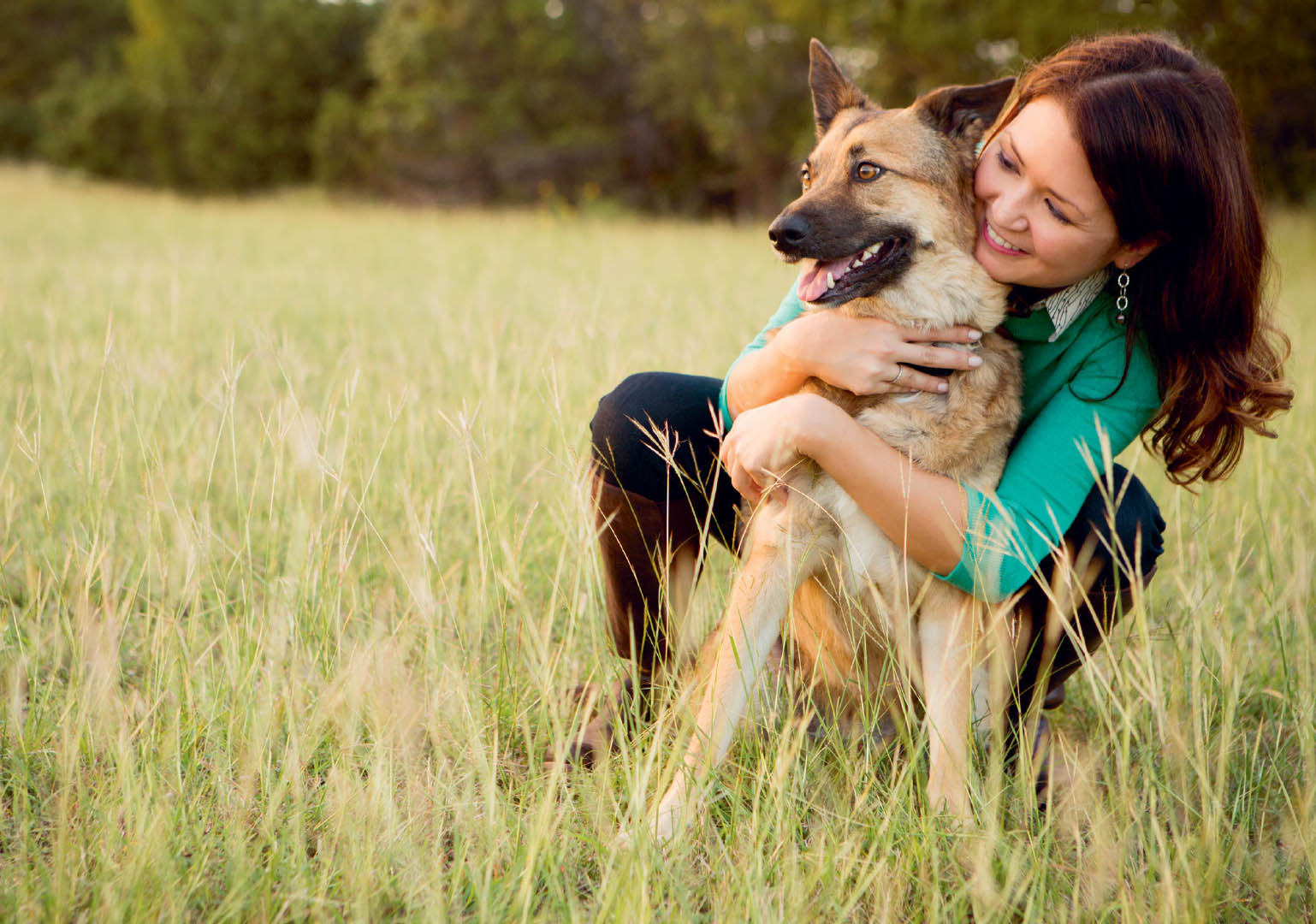
Maintaining realistic expectations about what can and cannot happen if you are working alone is important. As you continue to gain experience with pet photography, you will start to develop a better understanding of what you can achieve, both alone and with an assistant.
MENTAL PREPARATION
We all have expectations, whether we are the pet parent trying to capture images or we are photographing someone else’s pet. As you begin each session, realize that you will likely not get the images exactly as you see them in your mind but that something different—possibly better—will result. I am a “super planner,” but pet photography has taught me again and again that, while the planning part is imperative, so is the need for adaptability and thinking on my feet.
I am not saying to give up easily on an idea you are trying to bring to life, but rather, try to give yourself the mental space to adapt and remain open to what is rather than what is not. This will open you up for a better experience and more creative opportunities.
Photographing on Location
I love photographing on location. I enjoy experiencing the different environments, and by photographing in and around people’s homes (for the most part), I can create something that is personal to pet parents. Pets are also generally more comfortable in their own surroundings, and this helps me capture strong imagery and get lots of variety.
MAKING YOUR PORTRAITS PERSONAL
It’s important for me to create images that have personal value, beyond the subject matter, to the pet parents. A pet’s home offers the opportunity to make portraits that include personal elements not typical of a studio environment. While I love the look and feel of studio-based images, they often lack a personal element, both in the photographs and the experience of creating them. Including personal elements helps make the photographs even more meaningful, as they can trigger memories and provide a sense of place that is integral to the pet parent’s experience of their pet.
I photographed Florence and her puppy in front of a barn at her home. Even though there is not a lot of environment in this image, I love the texture and color and the way it serves as a reference to her home environment.
So, how do you make pet portraits personal? Whenever possible, find out about the likes and behaviors of the pet you’re photographing, and do your best to exemplify these in the images. Perhaps the dog loves to lounge around and cuddle or is obsessed with looking out the window by the front door. There might be a special chair that a cat loves to curl up in. Maybe the dog or cat has a favorite toy they love to play with. Perhaps the pet parent has a particular sense of style that you can include to make the images more meaningful.
Keep in mind that some personal elements may not necessarily photograph as well as others. It is your job as the photographer to determine how to incorporate the elements in an aesthetically pleasing or interesting way. Use your judgment and choose to spend time on what you think will translate well into photographs. If you find yourself in a situation where the pet parent wants to include an element that you don’t think will photograph well, I encourage you to either to take a photograph quickly for them or simply be honest and tell them that it doesn’t render well on a photographic level and that you don’t think they would love it. Remember, they are counting on you to make the aesthetic decisions!
When I learned about Simon’s obsession with his beloved toy frogs, I decided to create a portrait that included this personal detail for his pet parents.
TIMING CONSIDERATIONS
Timing can be critical for the success of your pet portraits, for a few very different reasons—especially when it comes to light. When I work on location, I use my scouting time (as discussed earlier) to help me identify the most photo-worthy spots within that location so I can come up with a game plan for how to approach the session from a time perspective. Choosing the right time of day to create your portraits is a very important decision.
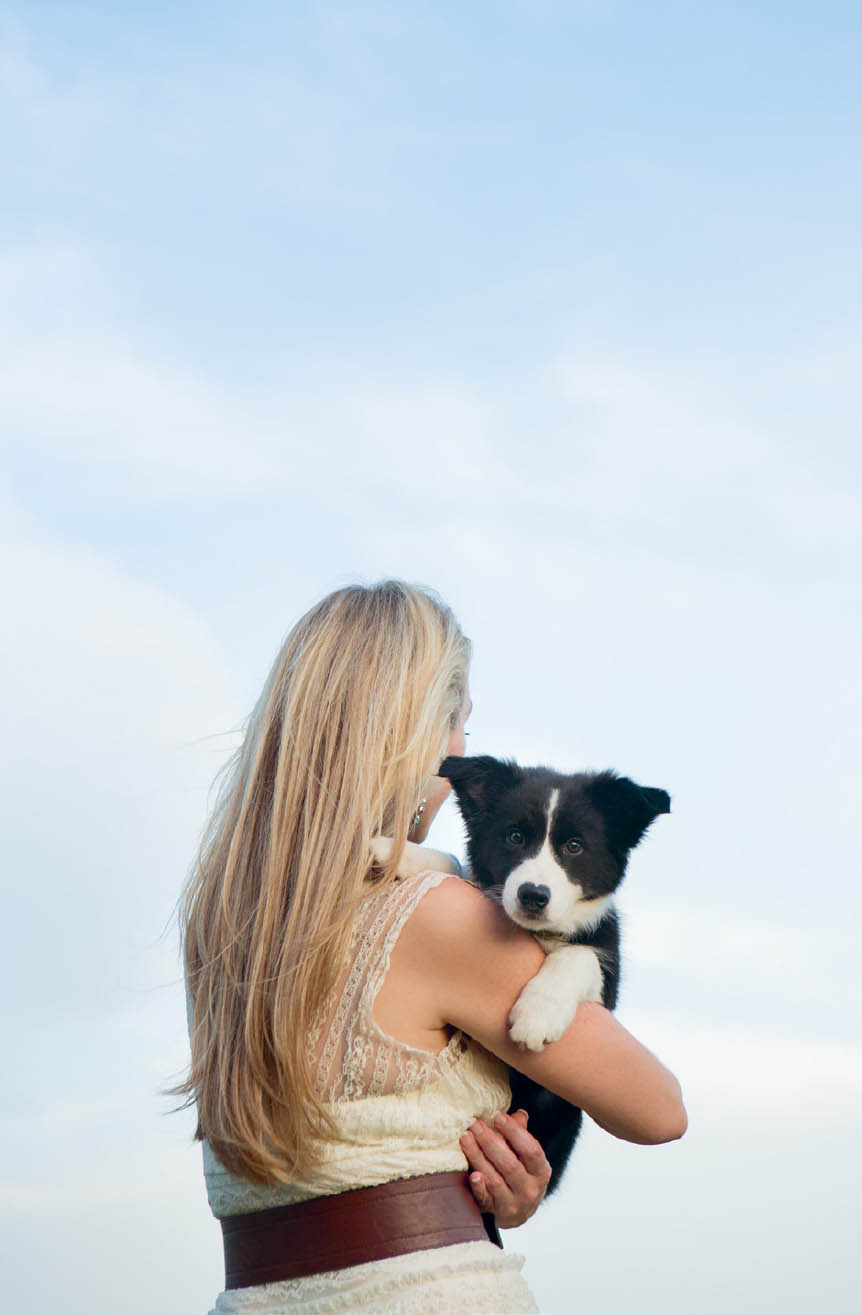
This portrait was created at the end of our session, just after the sun went behind the horizon. It is one of my favorite images from the session. I couldn’t have captured this image if I had scheduled the session for a different time of day.
Ideally, I suggest that you schedule portrait sessions for a time in the day when the pet has no other obligations. This is essential, because if the pet has recently been stressed (either positively or negatively), it will likely be more difficult for you to get the desired results.
The other consideration with regard to time is that I give myself enough of it. One reason that I think people tell me my portraits look genuine and real is that I dedicate significant time to the process. This doesn’t mean that you need to spend all day photographing, but the more you can absorb yourself in the process, the more you can build connection with the pet and pet parent, and the more ideas will arise and the moments you capture actually will be real. Having said that, animals don’t have an endless amount of energy and attention, so you’ll need to take this into account and be realistic. I tend to push the envelope and photograph for a long time (portrait sessions usually last around three hours between setup and breakdown), but I feel that the time I spend contributes to the final results.
OUTDOOR LOCATION TIMING tends to revolve around the light. Outdoor spots generally have better light early in the morning or at the end of the day before sunset. The light during these times isn’t generally as harsh, and you have a little more to work with in terms of backlighting, reflecting, and so on. When the sun is directly overhead, by contrast, you tend to have fewer options for modifying the light. Keep in mind that if you are working in an area with a lot of trees or mountains, you can “lose” light earlier than in more open areas. Even if it’s more convenient to photograph at the dog park at noon, you most likely won’t be as happy with the images at that time, as opposed to going earlier or later in the day.
INDOOR LOCATION TIMING can vary more and offers more flexibility. Sometimes the best time of day to photograph indoors is in the middle of the day when the light from outside is bouncing through windows. If you’re using studio lighting, the time of day won’t impact you very much unless you have trouble overpowering bright light streaming through a window. Each location will be different, and once again, a location scout will help out tremendously.
Even after all of your preparation, you will likely run into challenges with timing at one point or another. Know that you’ll be able to navigate through issues as they come up and that you will learn from them. With experience, it’s absolutely possible to troubleshoot during each unique situation.
OUTDOOR LOCATIONS
I love photographing pets outdoors, and I’m often asked to do so. Here I’ll go into some of the advantages and challenges that you should consider in your pet photography.

I love this image because of the fall colors and beautiful contrast. This session required a lot of regrouping the dogs, because the trails were bustling with flying leaves, other dogs, and people. Although this situation was a bit challenging, I was happy with the results.
ADVANTAGES
Outdoor locations usually enable pets to feel in their element if they are accustomed to spending time in the outdoors and will generally allow for interesting imagery with a natural environment and backgrounds. Horses, for example, spend a great deal of time outdoors, and most often I photograph them in fields, open spaces, or near or in a barn. Although it is possible to photograph horses in a studio environment (which can be beautiful), they are not typically found in this type of setting.
If you are photographing during a specific time of year, it can be fun to include seasonal elements of the outdoor environment in your images, for example, photographing a dog jumping into a lake in the summer or rustling through a pile of leaves in the fall. Depending on your location and the time of year, photographing outdoors can help you introduce tremendous color to your pet portraits. Urban locations can be quite lovely and a great way to show an edgy side in your pet portraits or highlight a pet parent’s lifestyle. Also, outdoor locations are generally more conducive to capturing pets in action, as the pets have more space than when indoors.
Another advantage is that if you are photographing in natural light, you have the option to move within the location fairly quickly using a variety of backgrounds in a relatively short period of time. Outdoor locations generally have more light than indoor locations, which helps ensure that you have the light you need for properly exposed images.
CHALLENGES
Outdoor locations can be difficult for photographing pets if containment is important. Outdoor rural areas can be stunning—but challenging if the animal tends to wander or run away. The outdoor spots I find myself in when photographing dogs, such as trails, dog parks, and fields, often include a lot of distractions, usually other dogs or people. In addition, photographing dogs in urban locations can be dangerous if you are near streets or busy areas, and they can be limiting in terms of photographing off-leash. Because of these factors, I find that photographing outdoors in the animals’ backyard seems to work quite nicely.
Weather can change quickly and can dramatically impact the images in both lighting and animal behavior. For example, windy days can cause animals to grow more intense or on edge. Rainy, dark days scheduled for outdoors will likely need to be rescheduled. Extreme weather conditions can add to the challenges. I know that if I am photographing a dog in Texas in the summer, I need to do it in the morning unless I’m planning on photographing the dog in water. If I photograph a dog outdoors, he or she may overheat and also pant a great deal, which isn’t always the look I want. Of course, if people are going to be a part of the photographs, heat or cold will also affect their comfort, and this will show in the final images.
INDOOR LOCATIONS
Shooting indoors has its advantages and disadvantages as well. Here are some considerations to keep in mind with your pet photography.
ADVANTAGES
Photographing inside a pet’s home rather than outside can be easier, mainly because indoor spaces are more contained, making it less likely for small pets to wander off. Most pets are used to being indoors and are very comfortable in their own environment. The animal’s comfort greatly impacts the experience of the photo session for them, the pet parent, and you as the photographer.
As mentioned, photographing at the pet’s home also enables you to include personal elements for both the pet and the pet parent.

CHALLENGES
Photographing indoors can often mean lower-light conditions. I might find a gorgeous location but discover that it is too dark to photograph with the desired shutter speed and aperture combination. This will require me to make decisions about the lighting or to choose another spot.
Indoor locations in clients’ homes can sometimes be visually cluttered, which can be challenging. Because you want to prioritize the pet in your images, busy areas in a home can become a distraction. I have found myself in incredibly beautiful indoor spaces that were difficult to photograph for this reason.
Prioritizing locations indoors is another issue to consider. Juggling all the options of where to photograph first and when and where to set up equipment can get a bit overwhelming.
PHOTOGRAPHING YOUR OWN PETS
Chances are that if you are interested or involved in pet photography, you have your own pets. Photographing your own pets is a great way to learn and build your creativity around pet photography.
GETTING CREATIVE AT HOME
The best aspect of photographing your own pets is that you have total freedom. You get to take all the time you need to turn your vision into a reality. You can photograph during the time of day that has the most beautiful light and stop when it disappears. If needed, you have the option of taking the time you need to set up lights and play around with different effects, leaving the lights where they are and picking things up the next day. Photographing your own pets can allow you to be more spontaneous with creating images, as there is less pressure to produce a final product in a specific time frame. This freedom can leave room for creative exploration.
Consider setting up an “official” shoot with your pets that allows you to experiment with lighting techniques, backgrounds, lenses, and perspective. This is different from grabbing a photo here or there and really requires your proactive energy. Remember that your own pets are the most available models, and of course, having images of them for you to cherish is a huge reward for your efforts.
LOCATIONS GREAT AND SMALL
It is possible to create beautiful portraits in any location, whether that is a mansion or apartment, an incredible garden or a patch of grass. Make an effort to stay open to possibilities that exist in any location. Know that there are inherent challenges in all locations, and positive results are within your grasp.
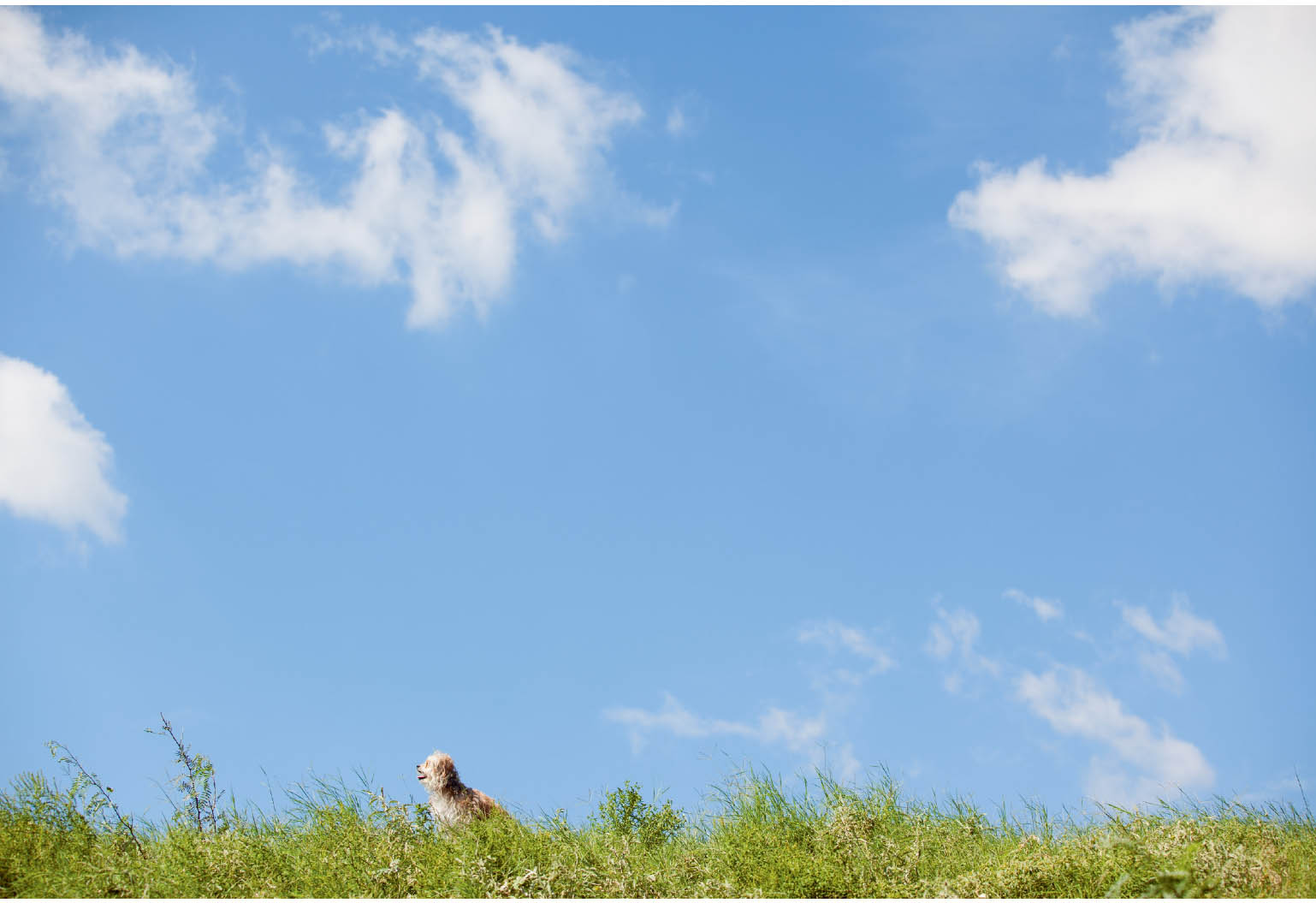
The Director’s Dance: Photographing People with Their Pets
When I first started photographing pets, my interest was mainly in photographing pets individually. While I still love photographing individual pets, I have acquired a passion for capturing the relationship that exists between people and their pets. This relationship is so special, and I’ve seen firsthand the value of these images to the people who hold these animals so close to their hearts.
Photographing people with their pets requires a certain level of direction and guidance. I’m referring to it as a “dance,” because it is a choreography of sorts, requiring a balance between controlling the outcome and allowing for surprises and spontaneity. While the moments in my images of people and their pets are authentic, I have contributed as a photographer to setting the stage for those moments to occur in a way that is communicated in an aesthetically pleasing way.
This is the dance.
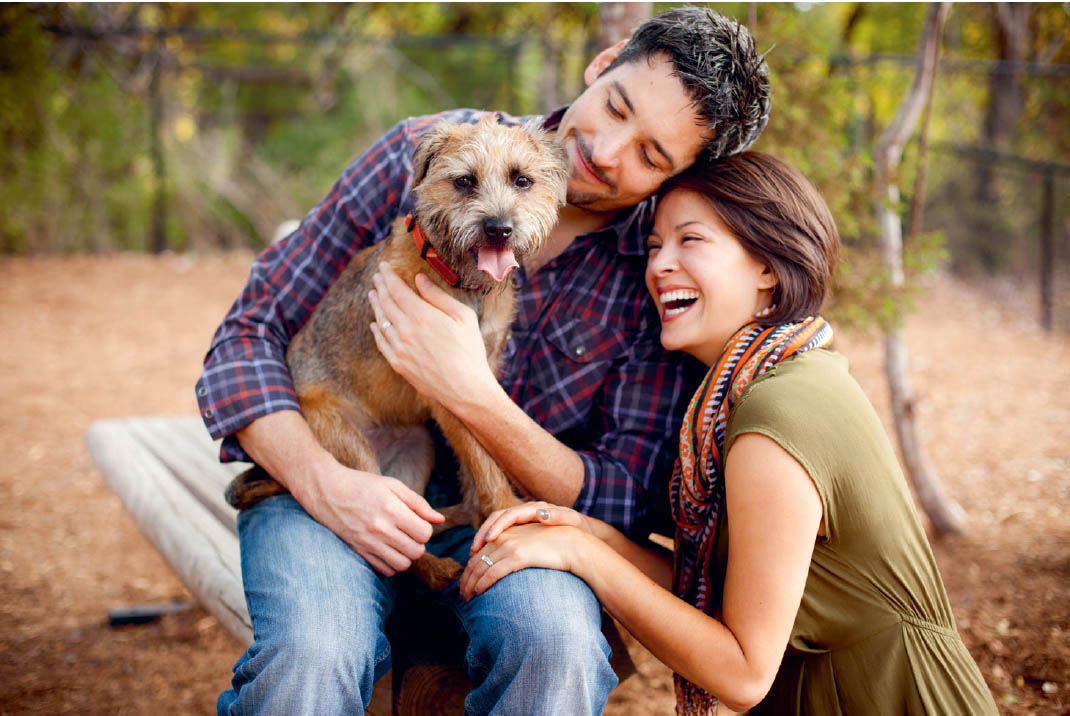
GETTING ON THE OTHER SIDE OF THE LENS
I strongly urge you to spend some time being photographed with or without a pet and allowing another photographer to give you direction. This experience will help you empathize with anyone who finds themselves on the other side of your lens.
When you are in front of someone’s camera being photographed, you count on them for guidance, encouragement, and feedback. This is such a good reminder of the emotional experience of being photographed. You might have specific expectations of yourself or your pet looking or acting a certain way, you might feel shy or intimidated, or you might feel pressured or confused about what the photographer wants you to do. Every time I experience what it is like to be photographed, I learn something new or am reminded of something valuable I may have forgotten.
BUILDING RAPPORT
It is vastly important that you build a rapport with whomever is in front of your camera. The more comfortable and at ease your subjects are with you, the better the experience and results will be. Ask questions about the pet and their relationship, as this will help you generate ideas and also allow the pet parent to relax and distract them from feeling overly self-conscious. When you ask people about their pets, they tend to feel really positive, and this feeling will be evident in the photos.
WARDROBE
In general, I will ask the person I am photographing to choose a wardrobe that is comfortable for them and that they can move in without difficulty. I recommend that they do not wear clothing that they need to fuss with often or that wrinkles easily.
I love color and encourage people to wear colorful clothing that isn’t overly distracting or that contains large logos or writing. Otherwise, the item can become the first thing the viewer notices in an image and take away from the pet and person interaction. I find that pastel colors, denim, and neutral colors photograph nicely and don’t detract much from the subjects. Patterns can sometimes work, but I usually ask that people put aside a second option just in case it feels too busy in the photographs.
Wardrobe for pets, while I have tried it in the past, is not quite my style. If you feel inclined to go this route (or the pet parent insists), have fun with it, ensuring that the pet is comfortable and the experience is positive.
LOCATION SPECIFICS
It’s important to find an alignment between where the pet and person are most comfortable and what works visually. Photographing someone with their dog in the middle of a busy city area may be beautiful but may not be the ideal place for the subjects to feel confident and relaxed. I find that the person’s home environment or a place where they spend a lot of time are the best places to capture the relationship between pet and pet parent.
Within the location, there may be personal elements and areas that are meaningful to the person—maybe a couch where they love to lounge with their pup or a corner of the kitchen where they always brush their cat. I am always sure to ask about these locations. Sometimes these spots are conducive to photographs, and other times they are not great because of issues with lighting or visual clutter.
My goal is to find a location that interests me and allows for strong composition and lighting. When I find or create this scenario, I then think about how I will place the subjects into the scene. You can have a beautifully authentic interaction in a dark corner of a room, but it will not necessarily translate well in a photograph. It is our job as photographers to allow all the necessary elements to align. This is part of the director’s dance.
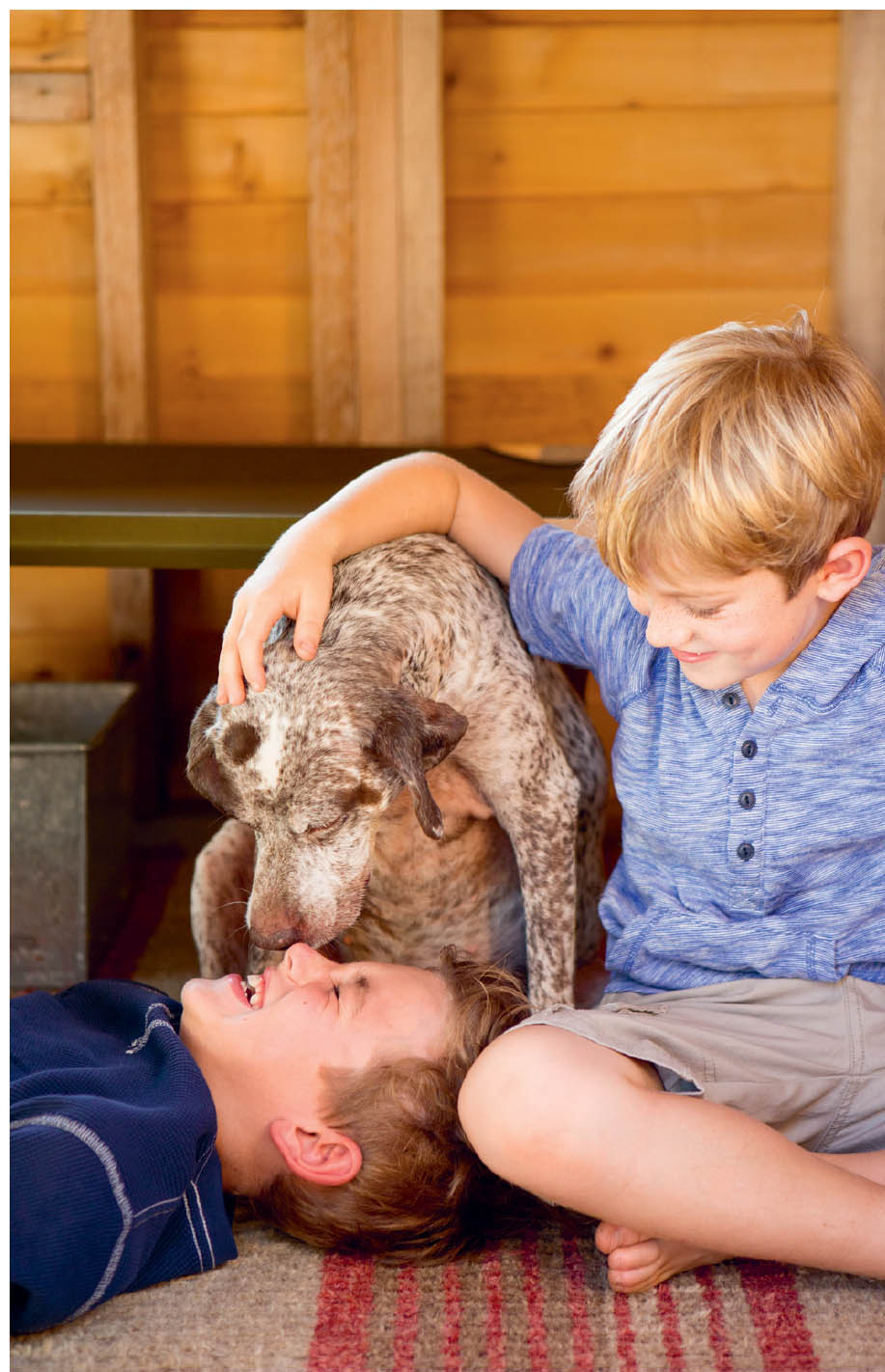
I photographed these boys in their tree house with their dog. This location was very special to the boys and the parents, and I know the images I created there have special meaning.
I HAVE BEEN PHOTOGRAPHING FOR MANY YEARS, AND I STILL GET NERVOUS BEFORE EVERY SHOOT.
I WANT YOU TO KNOW THAT THIS IS TOTALLY NORMAL AND, IN MANY WAYS, VALUABLE.
I CARE DEEPLY ABOUT CREATING MEANINGFUL PORTRAITS AND A POSITIVE
EXPERIENCE FOR MY PETS AND PEOPLE. I AM SURE YOU DO, TOO. KNOW THAT
NERVES ARE NOT A BAD THING AND THAT THEY MAY ACTUALLY CONTRIBUTE
TO YOUR SUCCESS!
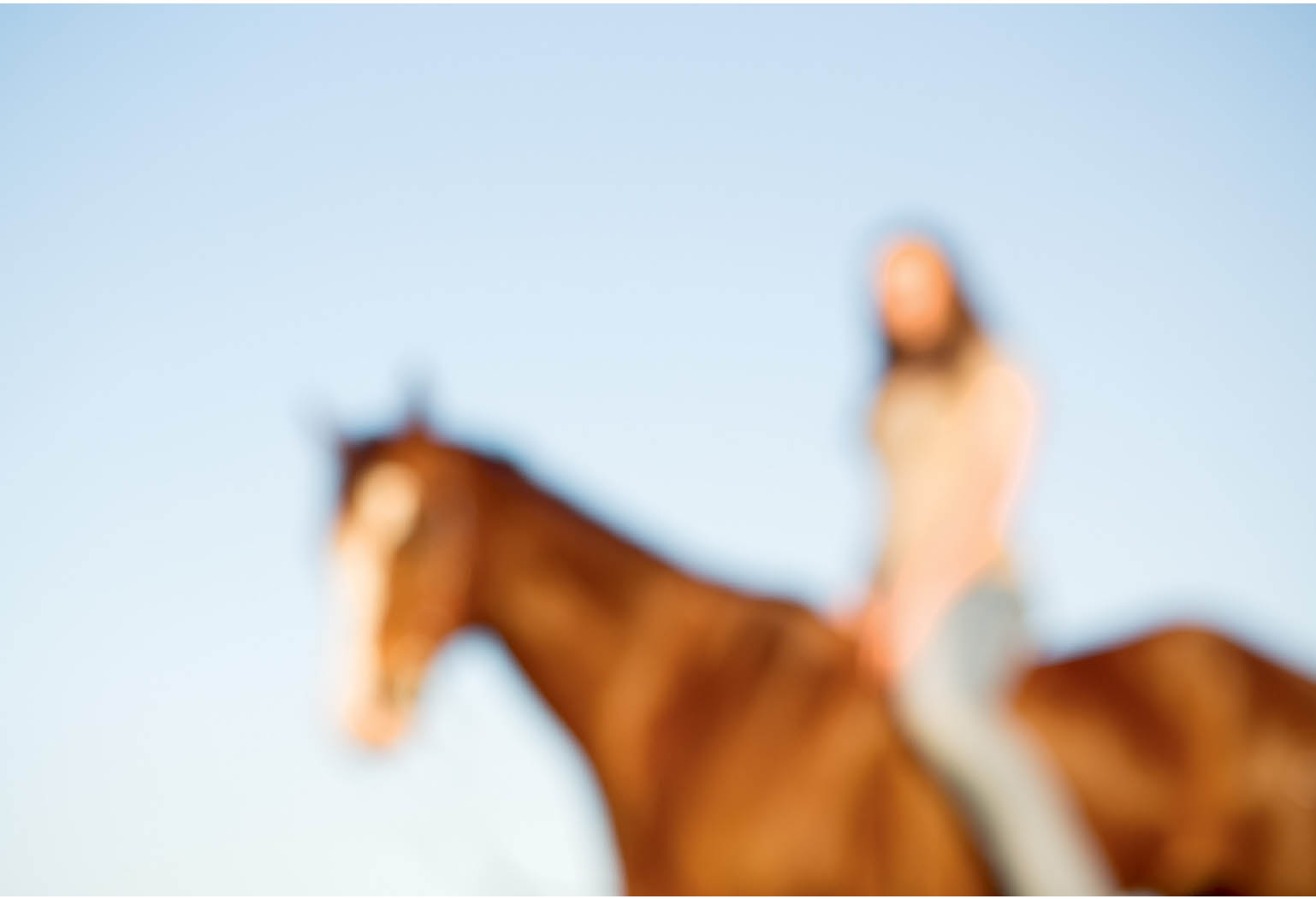
POSING AND CAPTURING CONNECTION
I frequently hear from clients or potential clients that my portraits, specifically of people with pets, do not feel posed. This makes me feel really good because it means that the images portray a certain truth in them that is often missing from completely posed portraits.
WAYS TO SHOW CONNECTION
In order to show connection, there usually has to actually be a relationship. I have photographed models with animals they do not know, and while not impossible, this makes it much more difficult to convey the bond between animal and person.
PHYSICALLY CONNECTING the animal and person in some way has a huge impact. Sometimes people are a bit nervous in front of the camera, and having a pet with them takes the focus off them and, as a result, eases anxiety.
EYE CONTACT between the pet and the person is a great way to show a bond. Even if the person and the animal don’t lock eyes in the portrait, the act of having them look at one another can trigger authentic reactions and interactions.
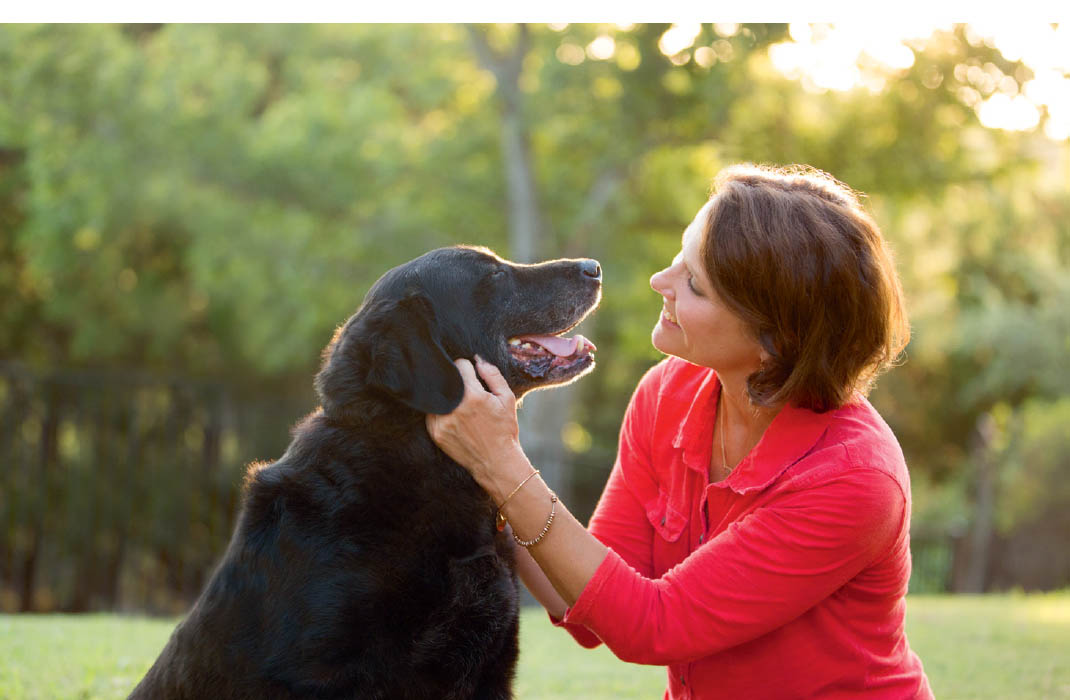
SOFT EMBRACES are often a beautiful way to show connection between a pet and their person. Be sure that hands and fingers are relaxed and that the body language of both the pet and the person looks comfortable and easy. If either the pet or the person looks tense, it will be communicated in the images. While animals don’t hug to show affection, people certainly do, and many animals are used to being hugged by their human. I love photographing embraces, and if the animal responds well, the bond between the animal and person shines through beautifully.
WHEN PEOPLE AND ANIMALS PHYSICALLY CONNECT, THERE IS AN AUTHENTIC EXCHANGE OF ENERGY THAT CANNOT BE MANUFACTURED.
SHARED ACTIVITY AND PLAY are great ways to generate authentic moments between a pet and their person. Throwing a ball or playing tug with a dog, brushing or playing with a cat, and grooming a horse are all common activities that can lead to sweet memories captured by your camera. Although these may not be typical portraits, they are moments that will likely have significance to the pet parent and truly tell a story. In addition, by participating in an activity, the person you are photographing can easily forget that they are being photographed and can be fully present in their interactions with their pet. Even if these activities take place between more static portraits, they will contribute to the comfort level of everyone involved and lead to stronger, more authentic portraits.
PEOPLE AS PROPS
Sometimes it is helpful and effective to incorporate posing that involves just a part or limited view of the pet parent in the image. For example, if the dog cannot be let off-leash or is having trouble holding still long enough for you to create a static portrait, you can ask the pet parent to gently hold the dog so you can crop in on the scene to include only a part of the pet parent or perhaps not show his or her face. In these cases, the person is being used in a more supportive role to help with the pet or simply add a little variation to your session. While connection can certainly be conveyed in these types of images, it isn’t always necessarily the main goal.
In this image, I used the pet parent’s legs as a prop to add to the composition. Since we were in an urban setting and could not let the dog off-leash, this felt like a good option.
BODY POSITIONING
The most important thing about positioning your people and pet subjects is that everyone looks comfortable. I’ll admit that some of the positions I have asked my subjects to take are not natural, but the successful ones will ultimately look natural. If I am having trouble describing what I am asking, I will often physically show the person the position I’d like them to take. (Sometimes when I try this I realize it doesn’t work, which is also helpful.)
Photographing animals and people together is like fitting two puzzle pieces together. Some pieces are large and some are small, but they can perfectly align if you get creative. My general go-to approach is to ensure that the people and animals are on the same eye level or close to it. Also, consider the size of the person and the animal you are photographing, and go over your options either in your head during the shoot or before in your preparation notes.
I wanted to get Kiki and her dog, George, on the same level. Since George was a big dog, I knew I could get them eye to eye if they both sat. I love their connection as they gaze into each other’s eyes.
If you are photographing a child with an animal, you may have very different options than if you are photographing an adult. Children are closer to the floor and so are smaller pets, which can make photographing them together a bit easier. If you are photographing a horse, you will need to think about ways to show the connection between the horse and rider that do not involve lying on the ground (as horses don’t usually do this).
LARGE PETS
I’m always trying to think about how I can position the pet closer to the person so they can physically connect. For large pets or pets that are large in relation to the person, I’ll want to position the person at a higher level so this physical connection can occur more easily. If I am photographing a Great Dane and a young girl, I will have the girl and the dog stand so that they are practically at eye level. If I am photographing a horse and a standing person together, I will think about raising the person to the eye level of the horse. If my goal is to capture authentic connection, I wouldn’t generally think to pose a large dog standing and a person standing next to him or her. If I am looking to show scale, however, I will likely want to show the difference in size and will take an entirely different approach.
It’s important for me to find multiple ways for people and their pets to connect physically. This often involves getting them on the same level.
SMALLER PETS
Small pets can be placed in locations that a horse or larger dog cannot. In many ways, small pets are easier to pose, because their small size offers many options. They can be picked up, placed in laps, and easily brought to the eye level of the human. Small pets can fit into the nook of a person’s arm or the nape of their neck, placed on their shoulder, or cupped in their hands. Small dogs can be nuzzled in a person’s jacket or relax on a tiny pillow.
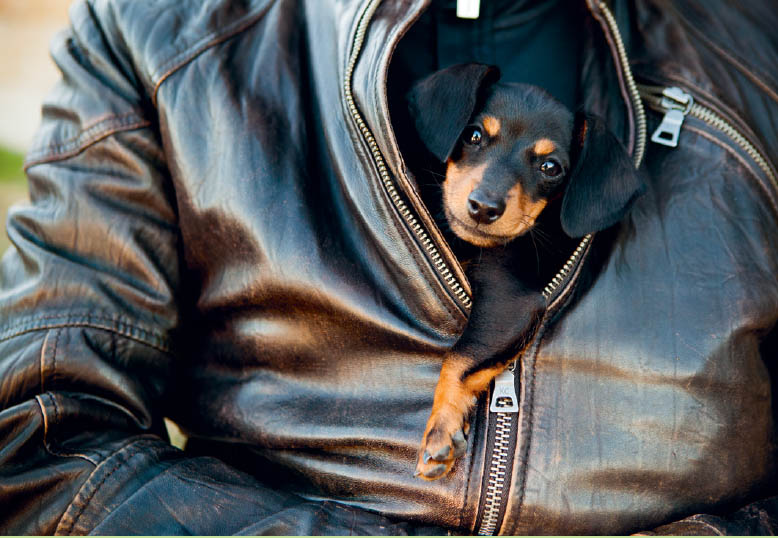
Small pets offer more posing options, because they can fit into small places and are easily held by children and adults. Little Daisy loved getting out of the cold and into her dad’s jacket for this portrait.
COMMUNICATION AS DIRECTOR
It is essential that you, as the photographer, give some sort of direction during your photo shoots. Be sure that you communicate your needs, whether you are choosing to capture posed imagery or candid action photographs. Throughout the shoot, remind yourself what it feels like to be on the other side of the camera, and communicate in a way that would be comfortable to you.
DURING THE SHOOT
For the most part, I photograph real people and pets, and they don’t have training in posing for the camera. Sometimes poses and positioning just happens—but I can’t count on it. So, I ask for interaction and physical connection, and I guide my subjects throughout the process. If I love what I am getting, I will communicate this and ask them to continue doing the same or repeat an action or gesture. I will pay attention to what I like and what seems to read well photographically, as well as get ideas from what occurs naturally.
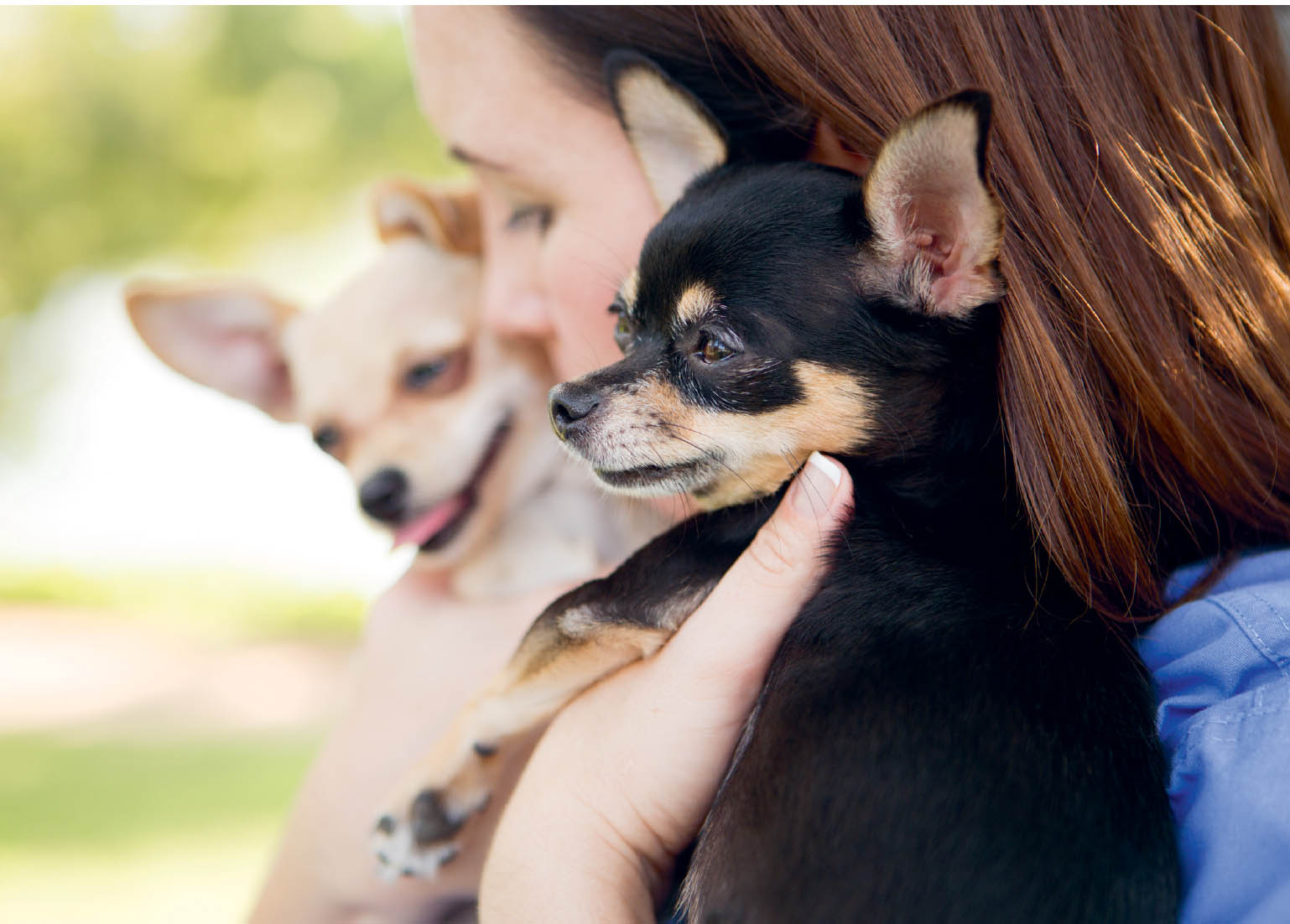
I find it valuable to approach my posing and positioning, especially when photographing people and pets together, with a level of inquiry. I’ll often ask questions out loud as part of my direction-giving. I do so because I find that this approach allows for a degree of fun during the process. As opposed to “Do this”/“Do that” direction, this more playful approach also allows me to shift ideas quickly and easily if they aren’t working well. Communicating as I go lets the person in on the process. Lastly, approaching the direction in this way takes some of the pressure off the humans I am photographing.
Here are the kinds of questions and ideas I might put forth:
- What if we try this?
- What if your hand is here? Nope, that doesn’t work. OK . . . let’s try this.
- What would it look like if you both sat here?
- Would it work if we put you here?
- Let’s try . . .
- Let’s see what happens if . . .
- What if you two stood up? I’d like to see what it looks like from this perspective . . .
ENCOURAGEMENT
It is very beneficial to encourage the people and animals involved in your photo shoot. People and animals love positive feedback, and when you are encouraging as a photographer, the energy on the shoot will remain higher for longer and the humans and animals will be more relaxed—and this will all show up in the final product. Humans respond well to being assured that they look great, the photographs look great, and the pet is looking amazing as well. Pets also need a break during the shoot and some love and attention, either in the form of physical affection, treats, or play rewards.
ACTIVE VERSUS PASSIVE SHOOTING
Not everyone loves to give direction or even wants to create posed portraits. That’s fine! You can photograph pets and people together in a more passive or documentary manner. Keep in mind that a passive fly-on-the-wall approach will generate very different images than one that involves more active direction.
I try to find a balance between active direction and passive moments. I set up the scenario in a way that suits my aesthetic needs and then allow for natural action and moments to occur. Some moments are more controlled than others, and some situations lend themselves to a more passive, candid approach.
I find that if I align the elements I want to create a strong image and direct just enough to initiate the opportunity for authentic connection between humans and their pets, I am happy with the results. This requires decision-making and direction on my part, even if all I’m really saying is, “Just love on Buddy,” or “Hold him closely.” I love capturing images that I have in my head, but I always prefer to be surprised by a gesture or reaction that is completely unplanned. These are the moments that make me really love pet photography.
CHILDREN AND PETS
If you are photographing children with animals, you’ll want to find ways to engage them with their pets. You can ask for hugs and kisses, or ask them (sometimes silly) questions about the pet:
- Do you think Buster likes to eat spaghetti?
- Do you think Buster would like to wear your shoes?
- Can you tell Buster a secret?
- Are Buster’s ears bigger than yours?
These kinds of questions help encourage interaction and reactions from children and pets.
Keep in mind that you’ll need a lot of patience to photograph children and pets, because both have short attention spans. After photo shoots with children and animals, I am always exhausted! It is not an easy scenario—but it is so rewarding when I am able to photograph them successfully.
DEPTH OF FIELD AND FOCUSING FOR MULTIPLE SUBJECTS
For portraits with a single pet, I typically choose to focus on the pet’s eyes (unless I have a creative reason for not doing so). But what if there is more than one pet? Like with any other technical aspect of creating portraits, my philosophy is to make whatever I do look intentional. There are no hard-and-fast rules about this, but here is an example with some ideas on how to approach the issue:
Pet and person, with exposure of 1/250 second, f/2.8, ISO 800
- If the pet or person is looking at the camera, I generally like to have them both in sharp focus and on the same plane.
- If the person is looking at the pet and the pet is looking at the camera, I focus on the pet.
- If both the pet and person are looking at the camera and are in the same general plane of focus, I focus on the person.
- If the person is in the background and the dog is in the foreground, I focus primarily on the pet but might also focus on the person as a creative option.
- If multiple people and pets are looking at the camera, I focus on one of the humans initially, and then shift my focus based on composition.
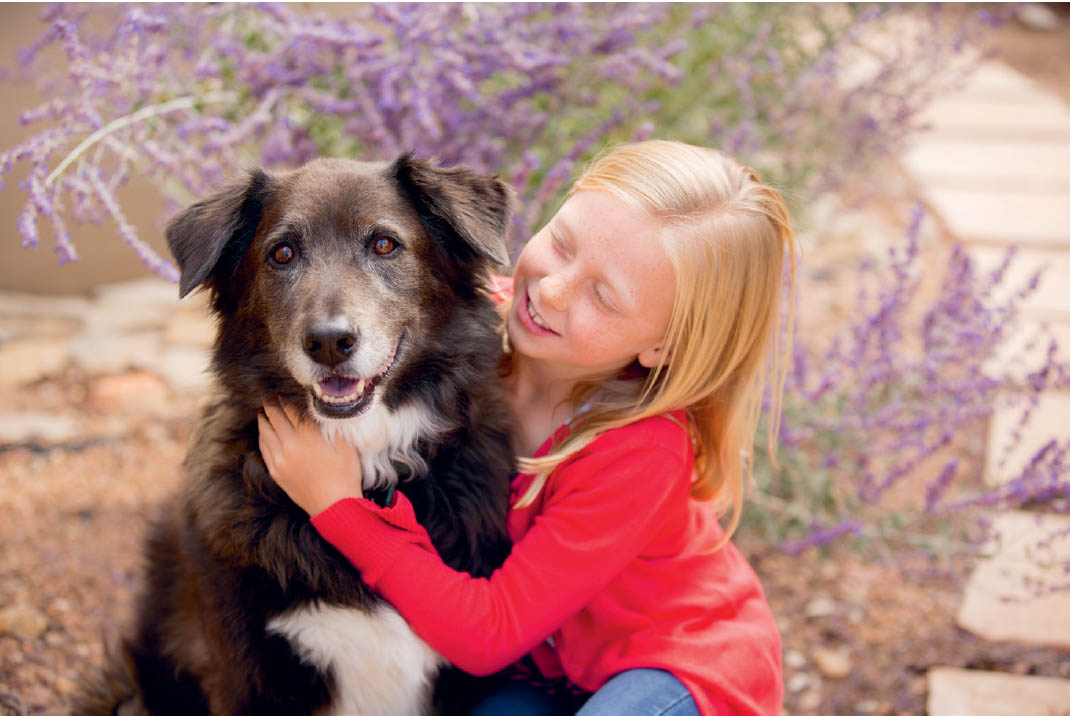
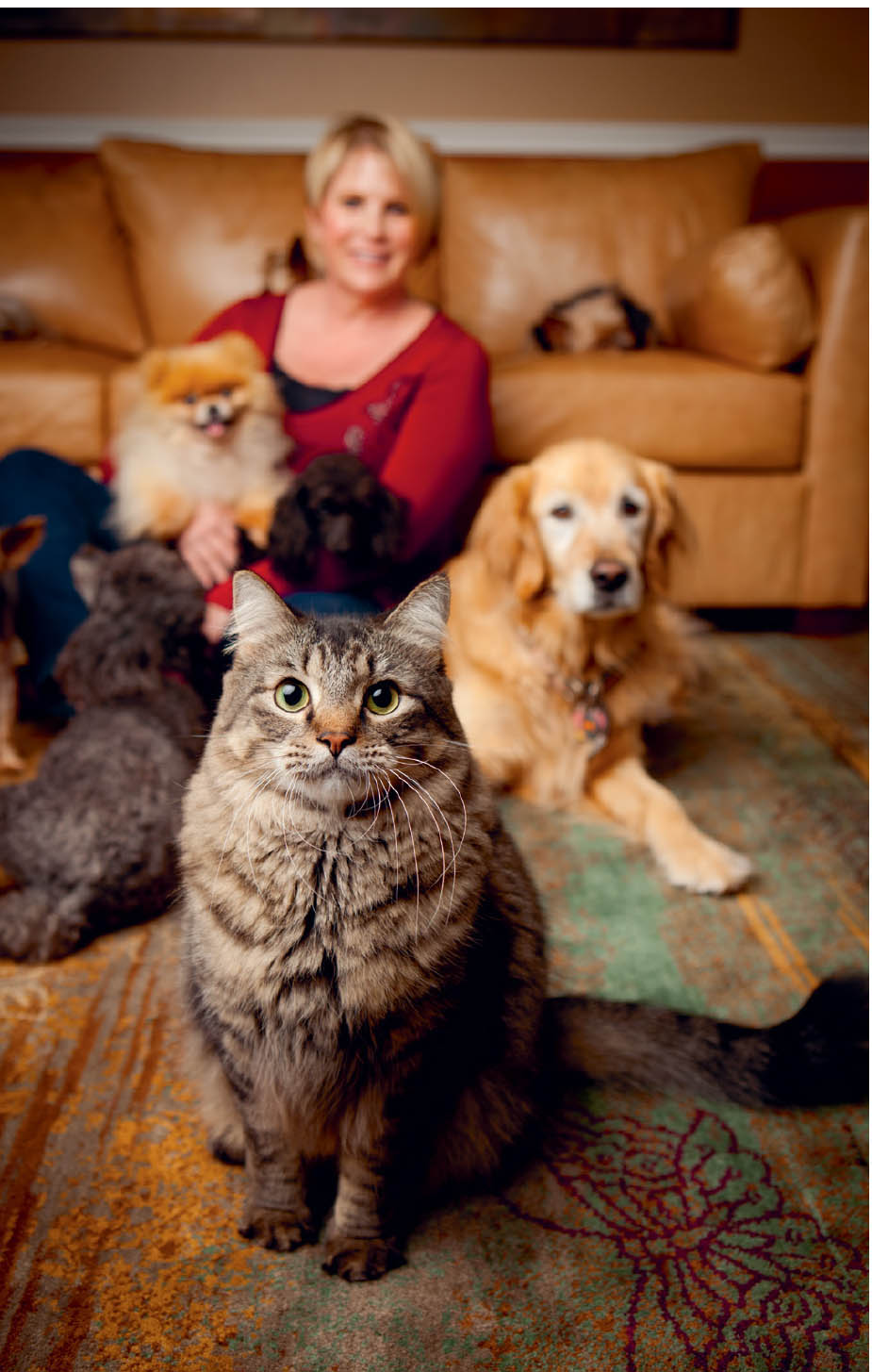
This image was taken at 1/125 second, f/3.5, with studio strobes indoors. I wanted to focus on the cat and have everyone in the background soft. Based on my own general “rules,” I would typically have the pet parent look at the cat, but I think this approach works; because of the extreme difference in depth of field, there is no confusion about where I intended to place my focus and where I want the viewer to look first.
How do you make your focus choices and differences in depth of field look intentional? Make the difference extreme. If you have a pet in the foreground and a person out of focus in the background, have the person soft enough so it is clear that you weren’t trying to have them in sharp focus and missed it. These choices are easier to do with shallow depth of field. I would still apply the same rules for myself for focus with a greater depth of field, but the differences would not be as obvious.
EDITING DECISIONS
So, what am I looking for when I choose the best images from the session? What exactly are authentic portraits anyway? Authentic portraits between people and pets are believable. The relationship between the pet and the human in the images elicits a level of connection that feels real. As I am shooting and editing, I am looking for an honest moment or exchange between the pet and the human. An authentic moment can present itself in many ways, and my favorites involve soft eyes, relaxed body language, and a shared moment or playful interaction between them. Of course, as photographers, we are the ones who get to choose which images to keep, and when I am editing, I want to keep the images that feel representative of the relationship I witnessed. I choose the joyful moments, expressions, and connections.
Pet photography shoots can be incredibly demanding, both on a physical and emotional level. I’ve developed strategies for approaching my shoots so that I can be as prepared as possible for anything I encounter; navigate my way through difficult situations that may arise; and produce meaningful, beautiful images (hopefully) in the end. As you continue to photograph pets, whether with people or without, you will start to develop your own strategies. Perhaps you will want to keep notes about what works and what doesn’t resonate as much. I like to have a starting point for each shoot and then allow myself to adjust as needed to each unique situation. That’s the fun and challenge of pet photography!
